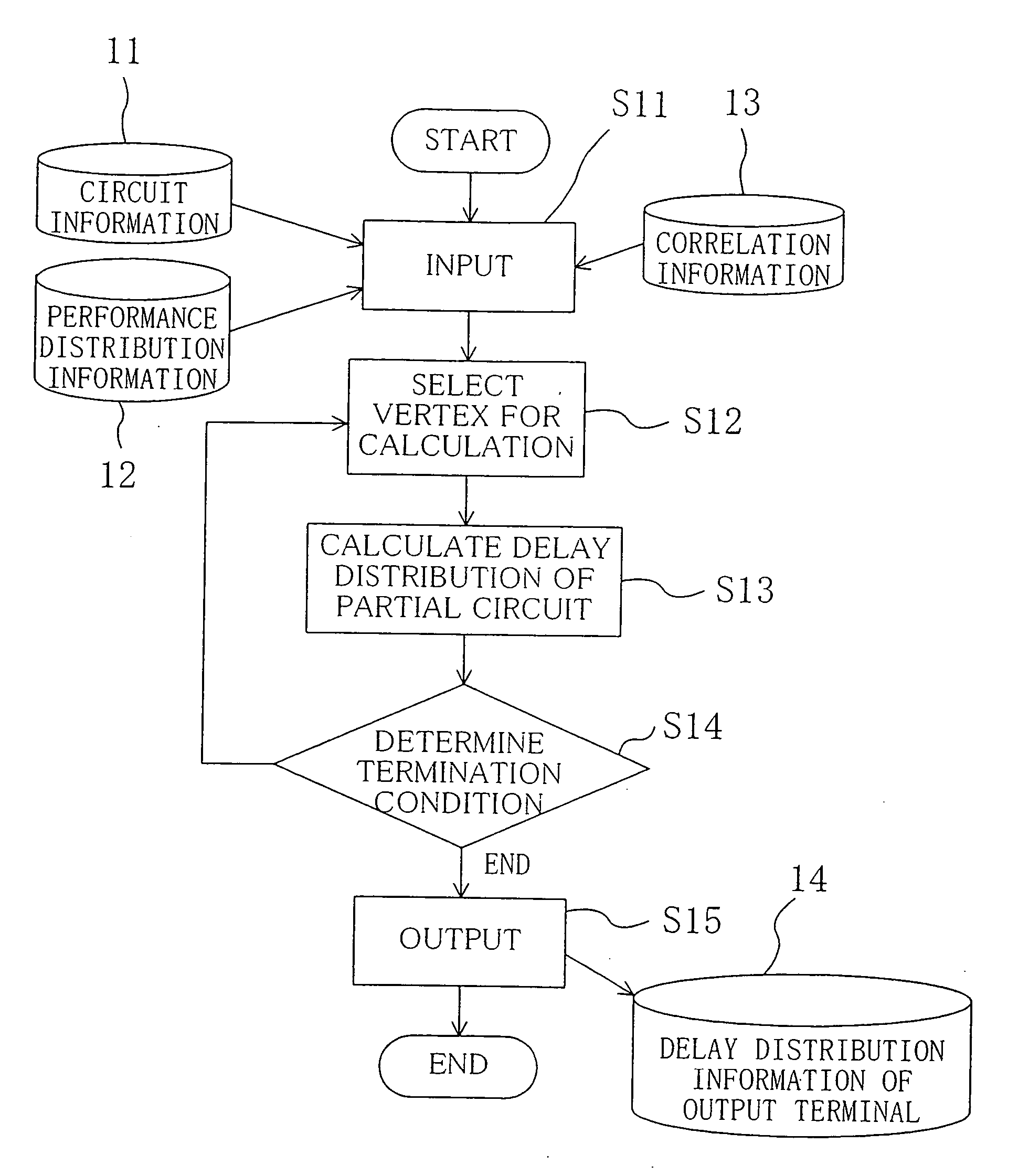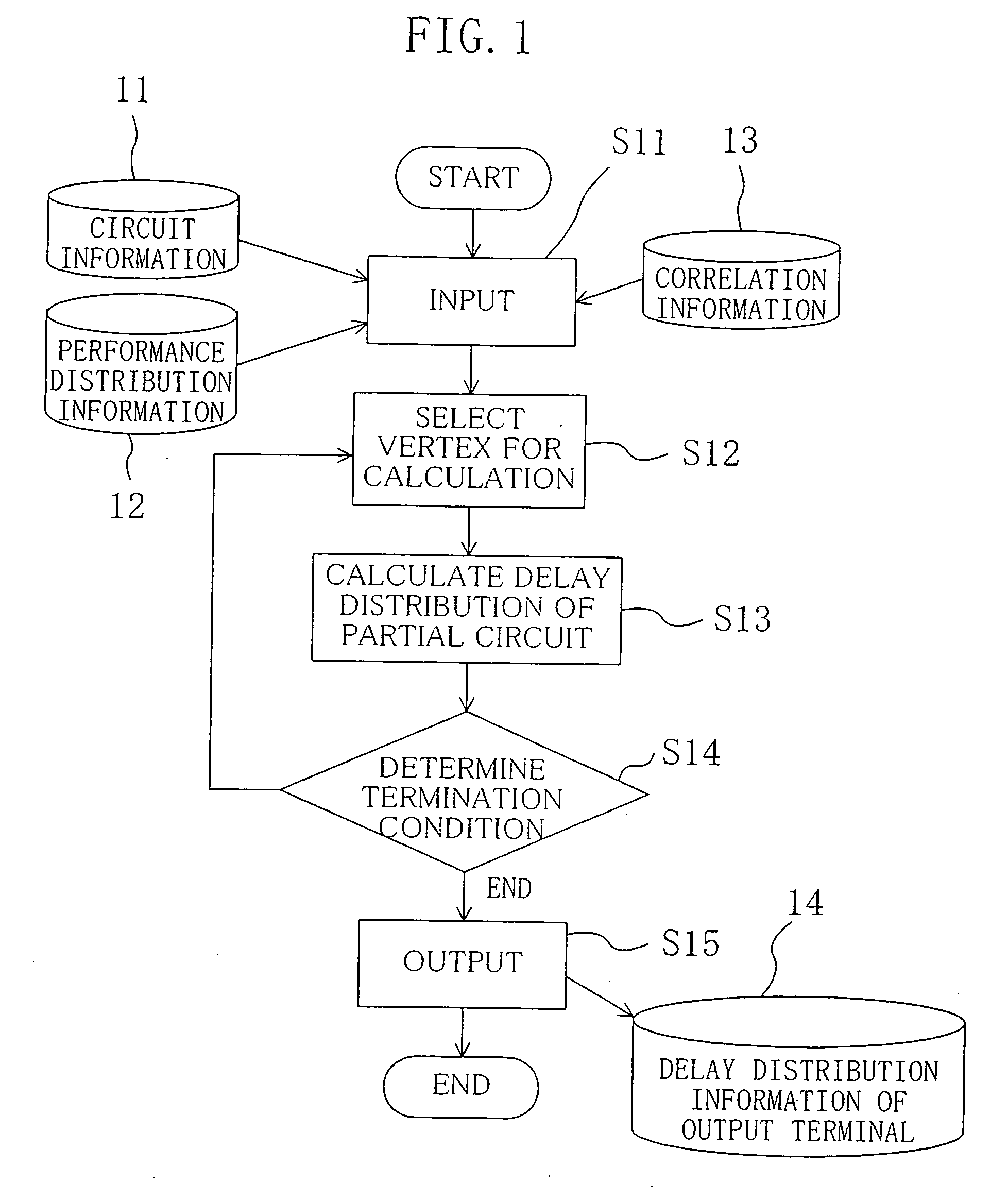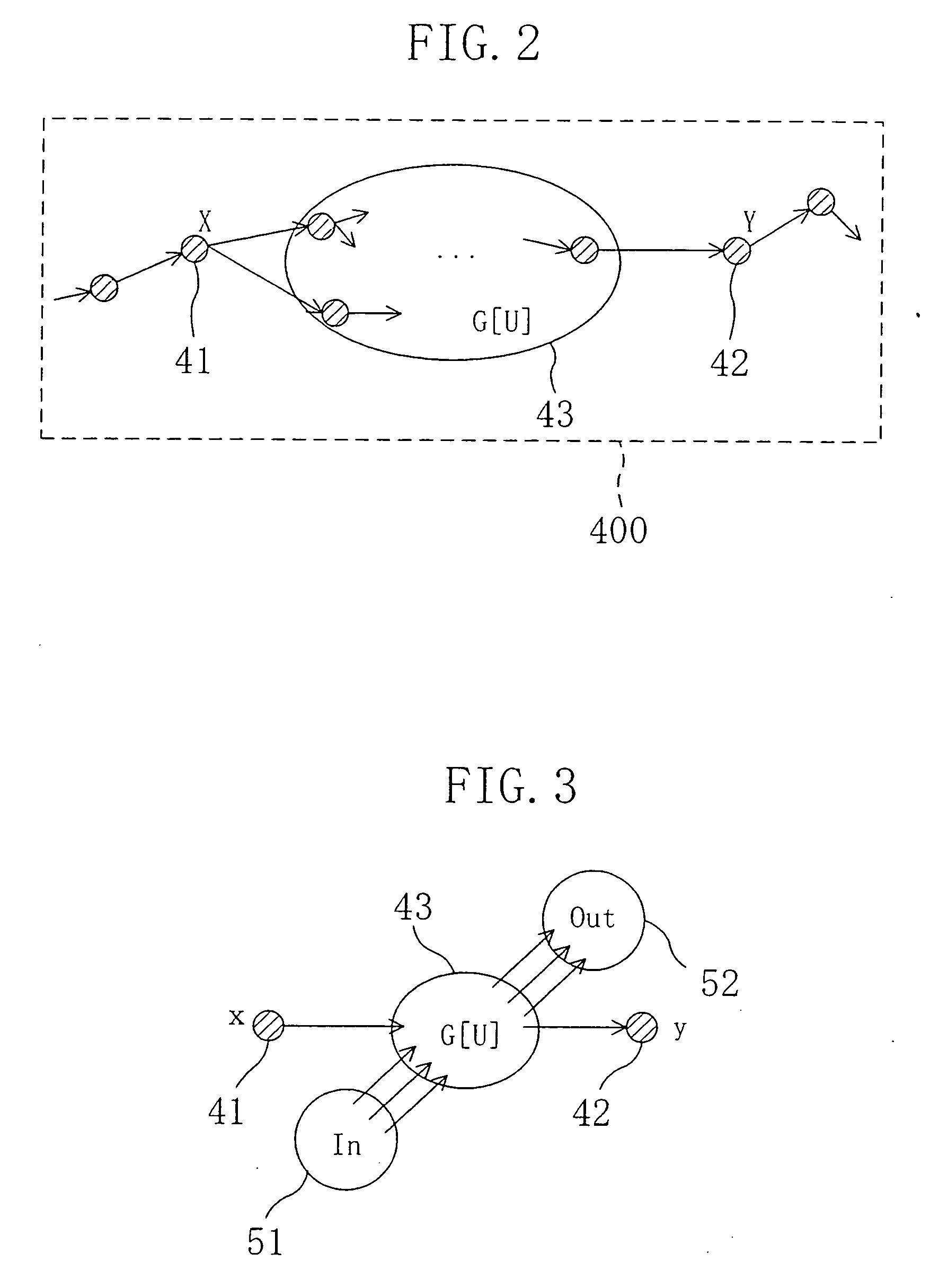Delay distribution calculation method, circuit evaluation method and false path extraction method
a delay distribution and calculation method technology, applied in the field of integrated circuit performance evaluation, can solve problems such as unnecessarily increasing area and costs, design including excessive margins, and inaccurate statistical analysis, and achieve the effect of calculating delay distribution more accurately
- Summary
- Abstract
- Description
- Claims
- Application Information
AI Technical Summary
Benefits of technology
Problems solved by technology
Method used
Image
Examples
first embodiment
[0043] A method for calculating distribution of the maximum delay value for each terminal v of a circuit will be described in the first embodiment of the present invention. In the following description, d0(v) denotes the true maximum delay required to propagate a value “0” to a terminal v, and dl(v) denotes the true maximum delay required to propagate a value “1” to a terminal v.
[0044] First, a given circuit is represented by an acyclic graph G=(V, E) as shown in FIG. 10. For each edge e=(v, w), delay (weight of the edge e) t(e) required to transmit a signal value from a terminal v to a terminal w is regarded as a stochastic variable, and has a normal distribution N(μ, σ2) The mean β and variance σ2 of the delay t(e) are respectively denoted by β(e) and σ2(e). In other words, probability density function f(t(e)) of the delay t(e) is given by the following equation: f(t(e))=12πσ(e)exp[-(t(e)-μ(e))22σ2(e)].(1)
[0045] The delay t(e) of an edge e corresponding to an intercon...
second embodiment
[0112] The second embodiment of the present invention relates to a method for evaluating a given circuit by removing false paths.
[0113] A “logical false path” can be characterized by using information on the connection structure of a circuit. In other words, a logical false path can be defined as a path passing through both two vertices x and y in an acyclic graph G=(V, E). A “functional false path” can be specified as a path including a causative path, and a causative path can be defined as a path from a vertex x of X to a vertex y of Y by using a pair of vertex sets (X, Y) (disclosed in H. C. Chen and D. H. Du, “Path sensitization in critical path problem,” IEEE Trans. Computer-Aided Design of ICs and Systems, vol. 12, no. 2, pp. 196-207, 1993).
[0114] More specifically, in FIG. 2, false paths can be designed as paths passing through both a vertex 41 of X and a vertex 42 of Y in a specified pair of vertex sets (X, Y). Therefore, removing these paths from the graph G 400 would ena...
third embodiment
[0154] The third embodiment of the present invention relates to a method for extracting false paths from a circuit to be designed. The extracted false paths can be removed by using the method of the second embodiment.
[0155] As described above in the second embodiment, a “logical false path” can be characterized by using information on the connection structure of a circuit. In other words, a logical false path can be defined as a path passing through both of two vertices x, y in an acyclic graph G=(V, E).
[0156] Like a signal value “0” in the AND gate, a signal- value that determines the output of a logic gate when applied to one input thereof is called a “control signal” . Like a signal value “1” in the AND gate, a signal value that does not determine the output of a logic gate even when applied to one input thereof is called a “non-control signal” . There are a control signal and a non-control signal for the AND, OR, NAND and NOR gates, and these signals have a negative relation. ...
PUM
 Login to View More
Login to View More Abstract
Description
Claims
Application Information
 Login to View More
Login to View More - R&D
- Intellectual Property
- Life Sciences
- Materials
- Tech Scout
- Unparalleled Data Quality
- Higher Quality Content
- 60% Fewer Hallucinations
Browse by: Latest US Patents, China's latest patents, Technical Efficacy Thesaurus, Application Domain, Technology Topic, Popular Technical Reports.
© 2025 PatSnap. All rights reserved.Legal|Privacy policy|Modern Slavery Act Transparency Statement|Sitemap|About US| Contact US: help@patsnap.com



